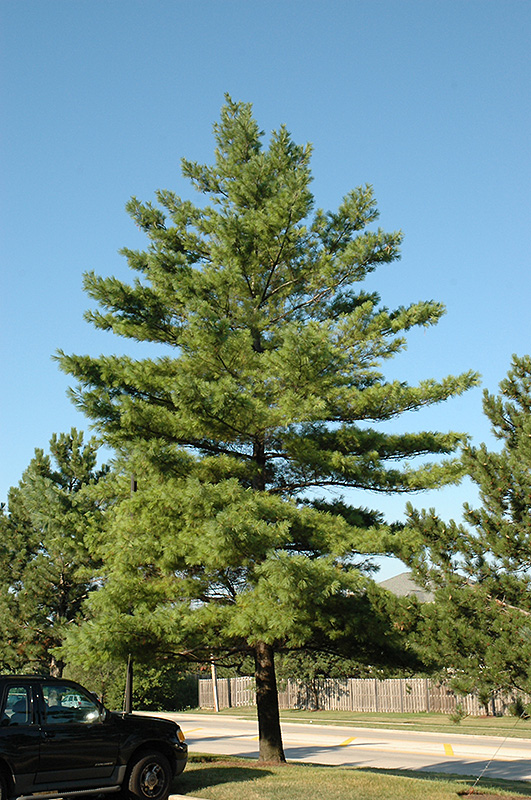Height: 100 feet
Spread: 40 feet
Sunlight:
![]()
Hardiness Zone: 3
Other Names: Eastern White Pine
Description:
A highly attractive shade tree, features silky smooth long needles which give a fuzzy appearance from a distance, tall wide habit of growth; prefers full sun; a beautiful specimen tree.
Ornamental Features
White Pine is primarily valued in the landscape for its ornamental globe-shaped form. It has rich green evergreen foliage. The needles remain green throughout the winter. The furrowed gray bark adds an interesting dimension to the landscape.
Landscape Attributes
White Pine is an evergreen tree with a strong central leader and a more or less rounded form. Its relatively fine texture sets it apart from other landscape plants with less refined foliage.
This is a relatively low maintenance tree, and should not require much pruning, except when necessary, such as to remove dieback. It is a good choice for attracting birds and squirrels to your yard. It has no significant negative characteristics.
White Pine is recommended for the following landscape applications;
- Accent
- Shade
- Vertical Accent
Planting & Growing
White Pine will grow to be about 100 feet tall at maturity, with a spread of 40 feet. It has a high canopy with a typical clearance of 6 feet from the ground, and should not be planted underneath power lines. As it matures, the lower branches of this tree can be strategically removed to create a high enough canopy to support unobstructed human traffic underneath. It grows at a fast rate, and under ideal conditions can be expected to live to a ripe old age of 120 years or more; think of this as a heritage tree for future generations!
This tree should only be grown in full sunlight. It prefers dry to average moisture levels with very well-drained soil, and will often die in standing water. It is very fussy about its soil conditions and must have sandy, acidic soils to ensure success, and is subject to chlorosis (yellowing) of the foliage in alkaline soils. It is quite intolerant of urban pollution, therefore inner city or urban streetside plantings are best avoided. This species is native to parts of North America.
Disclaimer - This Plant Finder tool is an online resource representing many of the varieties that we carry over the course of the season, and is intended for informational purposes only. Inventory varies seasonally, so we cannot guarantee that every plant will be in stock at all times - please contact the store directly for current availability. It does not include our entire selection of plants, so be sure to visit our store to see varieties that may not be represented on this list.

